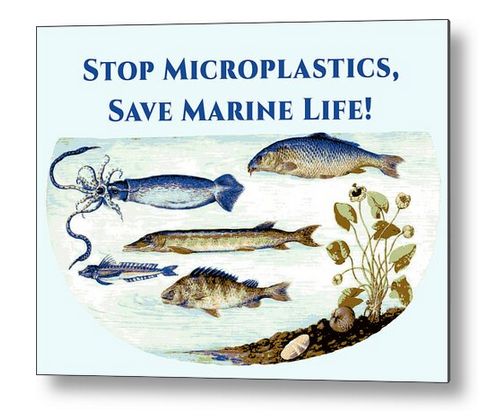What are microplastics and what are nanoplastics?
MPs are small pieces of plastic, ranging from 1 μm to 5 mm in length, that occur in the environment as a consequence of plastic pollution. Nanoplastics, or NPs, are a subset of microplastics and are smaller than 1 μm (1 micrometer or 1000 nm).
Both microplastics and nanoplastics can be harmful to human health and the environment because they contain toxic chemicals that can leak into air, water, and food.
They can enter natural ecosystems from various sources, including cosmetics, clothing, construction, renovation, food packaging, and industrial processes.
Nanoplastics exhibit distinct physicochemical features compared to microplastics, such as Brownian motion, a higher specific surface area, and stronger interactions with other pollutants, making their analysis and fate studies more challenging.
What are the sources of MPs?
Microplastic originate from both primary and secondary sources. Primary microplastics are intentionally manufactured and used in products like cosmetics, toothpaste, and cleaning agents. Secondary microplastics are created when larger plastic items degrade in the environment due to weathering processes. These larger items include water and soda bottles, fishing nets, plastic bags, microwave containers, tea bags, and tire wear. Both types of microplastics are significant contributors to environmental pollution, particularly in aquatic and marine ecosystems.
Microfibers from synthetic clothing, such as polyester, acrylic, and nylon-based garments, are a major source of microplastics. These fibers are released during the washing process and contribute to the pollution of water and microplastics in the air we breathe.
Additionally, microplastics can come from the breakdown of larger plastic debris, the erosion of plastic products, and the release of plastic pellets used in manufacturing. Microbeads, which are small plastic beads used in personal care products, are another source of primary microplastics. However, many countries have banned the use of microbeads in recent years.
Tyres and road markings also contribute significantly to microplastic pollution, accounting for 28% and 24% of primary microplastics, respectively.
What are the sources of nanoplastics?
MPs cannot be seen by the human eye and are often the result of the degradation of microplastics through chemical weathering, mechanical breakdown, and digestive processes of animals.
Are microplastics a threat to sea life?
Microplastics are dangerous for sea life because they can be ingested by marine organisms, leading to various health issues. These tiny plastic fragments are often mistaken for food by marine animals, including zooplankton, fish, and even larger creatures like whales. When ingested, microplastics can cause physical harm, such as blockages in the digestive system, and can also leach harmful chemicals into the organism’s body. Additionally, microplastics can absorb and transport toxic pollutants from the water, further endangering marine life. The ingestion of microplastics can also disrupt feeding behaviors and lead to reduced feeding efficiency, affecting the overall health and survival of marine organisms. Microplastics have been found in the stomachs of various marine animals, indicating their widespread presence and potential harm in marine ecosystems.
Moreover, microplastics can alter the composition of coral microbiomes and cause tissue damage, oxidative DNA damage, and altered gene expression in corals. These effects can ultimately lead to coral death, threatening the health of marine habitats that depend on corals.
Microplastics are also a threat to the base of the marine food chain, as zooplankton may not be able to distinguish between their usual food and microplastics, leading to the transfer of microplastics up the food chain, including to animals that humans consume.
Lastly, the presence of microplastics in marine environments can lead to the proliferation of opportunistic bacteria, which can further harm marine life.
Nanoplastics vs Microplastics
Nanoplastics are considered more harmful than microplastics due to their smaller size and higher reactivity, which allows them to reach more remote locations and penetrate living cells more easily.
Research indicates that nanoplastics can induce various toxic effects, including inflammation, oxidative stress, apoptosis, and disruptions to metabolic homeostasis in different cell types.
Nanoplastics can be more harmful to ocean life due to the increased likelihood of being absorbed through the digestive tract and transported into tissues and organs. This absorption can interfere with various physiological processes, including neurotransmission, oxidative stress, and immunity levels in both freshwater and marine organisms.
Research indicates that nanoplastics can cause oxidative stress in aquatic organisms, leading to increased reactive oxygen species (ROS) levels and decreased glutathione reductase (GR) activity, which can harm cellular health. Additionally, nanoplastics can interact with environmental pollutants, enhancing their toxicity and bioaccumulation in aquatic species.
While both micro- and nanoplastics can cause harm, the specific mechanisms and extent of damage can vary. For example, some studies show that nanoplastics can increase the adsorption of pollutants like perfluoroalkyl compounds to microplastics at higher pH values, potentially increasing toxicity.
Therefore, nanoplastics pose significant risks to marine life due to their ability to penetrate tissues and organs and their potential to enhance the toxicity of other pollutants.
Read our next article to find out what we can do to stop micro- and nanoplastics.





